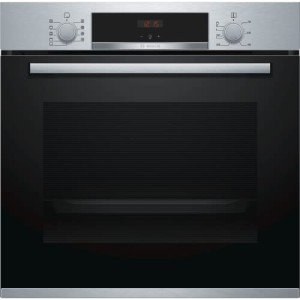The Rise of Built-In Ovens: A Seamless Approach to Modern Cooking
In contemporary kitchen areas, where style looks blend perfectly with performance, one home appliance stands apart as a true game changer: the built-in oven. As house owners and chefs alike continue to look for innovative solutions that improve their cooking experience, built-in ovens have actually ended up being progressively popular. built in range oven Ovens & Hobs out the benefits, factors to consider, and patterns surrounding built-in ovens, highlighting why they are an important feature in modern cooking areas.
What is a Built-In Oven?
A built-in oven is a cooking area home appliance created to be integrated into the cabinets of a kitchen instead of standing alone. Unlike conventional freestanding ovens, which can be moved and positioned anywhere, built-in ovens can be found in numerous designs and sizes to fit particularly within designated spaces. Available in single or double setups, these ovens provide a streamlined look that matches modern-day cooking area styles.
Advantages of Built-In Ovens
1. Space-Saving Design
One of the most attractive benefits of built-in ovens is their space-saving style. By incorporating the oven into cabinetry, you can maximize important counter and floor space. This is particularly beneficial in smaller sized cooking areas, where maximizing space is vital. Built-in ovens can be installed at eye level, making them more available and reducing the requirement to flex down.
2. Visual Appeal
Built-in ovens add to a sleek and cohesive kitchen area design. Offered in various finishes-- such as stainless steel, black, white, and custom cabinetry-- they can mix effortlessly into the general decor. This visual appeal boosts the kitchen area's visual harmony and elevates the space, producing a modern and sophisticated environment.
3. Improved Functionality
Many built-in ovens come equipped with innovative cooking innovations, such as convection cooking, steam ovens, and smart features. These improvements permit versatile cooking options, making it much easier to attain professional-level results in your home. Smart built-in ovens can even link to Wi-Fi, making it possible for users to manage the oven from another location, receive notifications, and gain access to a range of cooking programs and dishes.
4. Improved Ventilation
Because built-in ovens can be integrated with cooking area hoods and ventilation systems, they can assist preserve better air quality and reduce cooking odors. This is particularly substantial for those who like to prepare with aromatic spices and active ingredients, as an effective ventilation system can keep the kitchen area comfortable and inviting.
5. Customization Options
Built-in ovens provide a wide variety of customization options to suit specific cooking styles and needs. From professional-grade home appliances with several cooking modes to compact styles for smaller sized kitchen areas, property owners can select the oven that fits their particular requirements. Numerous makers likewise offer adjustable front panels, allowing you to match the oven's look to your cabinetry for a truly combined look.
Considerations When Choosing a Built-In Oven
While built-in ovens have lots of advantages, there are very important considerations to remember before purchasing:
1. Rate
Built-in ovens usually feature a higher rate tag than their freestanding counterparts due to their style and setup requirements. It's important to factor in both the cost of the oven and any extra expenditures connected to cabinets adjustments or installation.

2. Setup Requirements
Installing a built-in oven often needs expert help, particularly if you need to modify existing kitchen cabinetry. Ensure that you think about any costs associated with setup, consisting of labor and prospective cabinets adjustments.
3. Size and Dimensions
Before acquiring a built-in oven, measure the designated space precisely to guarantee an appropriate fit. Built-in ovens can be found in various sizes and configurations, so choosing one that aligns with your requirements and kitchen design is important.
4. Way of life and Usage
Consider your cooking practices and requires when selecting a built-in oven. If you often host large events, a double oven might be more useful. On the other hand, if you have a compact kitchen, a single-wall oven may be adequate.
Trends in Built-In Ovens
The cooking area device market is continually evolving, and built-in ovens are not exempt from emerging trends. Some existing trends include:
Smart Technology Integration: With the increase of clever home technology, built-in ovens now frequently include connectivity alternatives. This permits users to keep an eye on cooking development and change settings through mobile apps.
Energy Efficiency: As sustainability ends up being a top priority, many producers are buying energy-efficient built-in ovens that decrease energy consumption while preserving performance.
Multi-functional Designs: Built-in ovens now offer functions such as air frying, slow cooking, and steaming, providing versatility that fulfills a vast array of cooking techniques.
Conclusion
Built-in ovens undoubtedly represent a best blend of style, function, and convenience in today's cooking areas. As more house owners go with this modern option, the focus moves to producing a cooking space that is as aesthetically pleasing as it is useful. Whether you are developing a brand-new home or renovating your cooking area, thinking about a built-in oven could elevate your culinary experience and transform your kitchen area into a trendy and functional haven. With a range of choices readily available and continuous developments in innovation, built-in ovens stay a standout choice for both novice cooks and cooking lovers alike.
